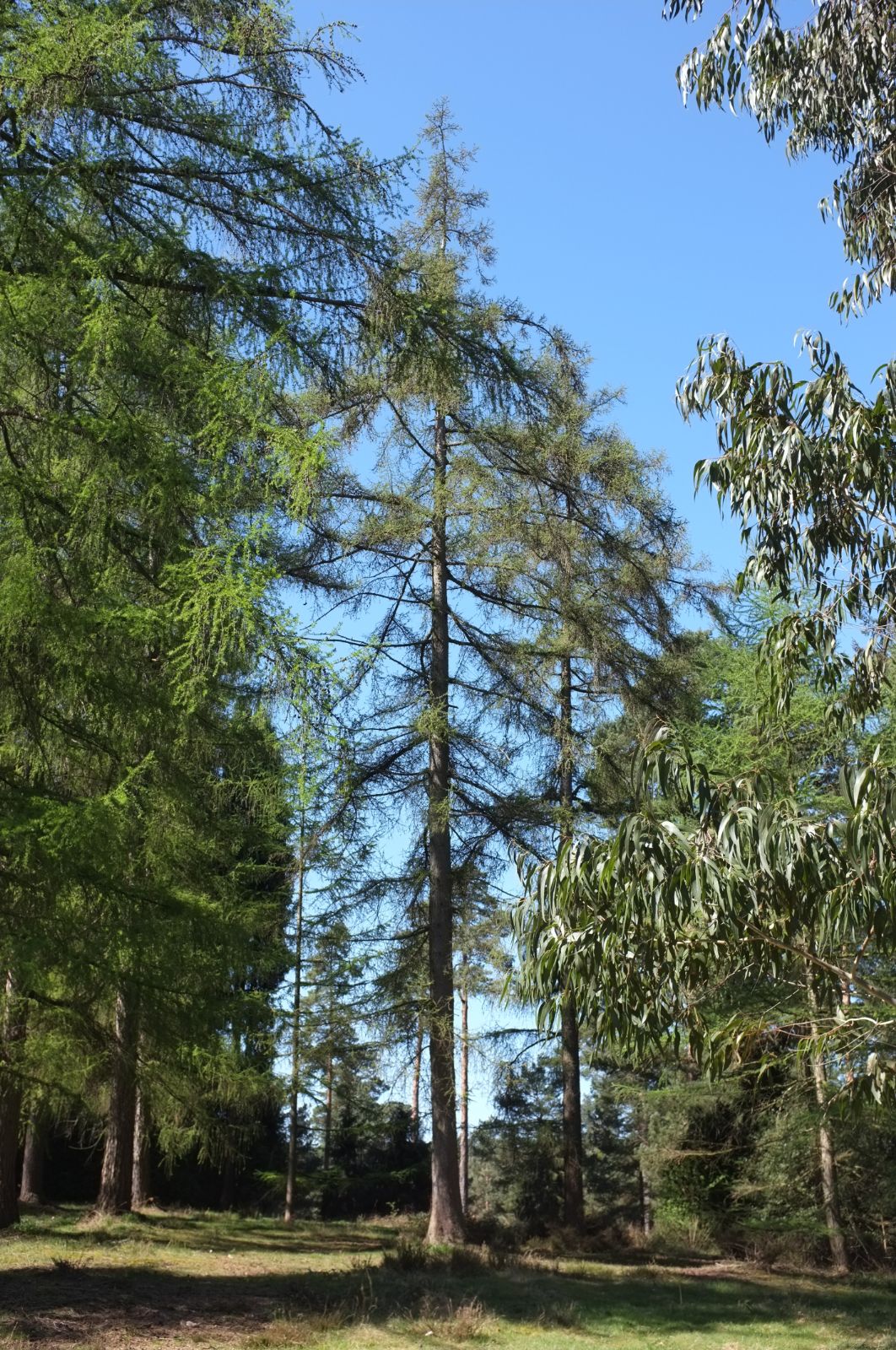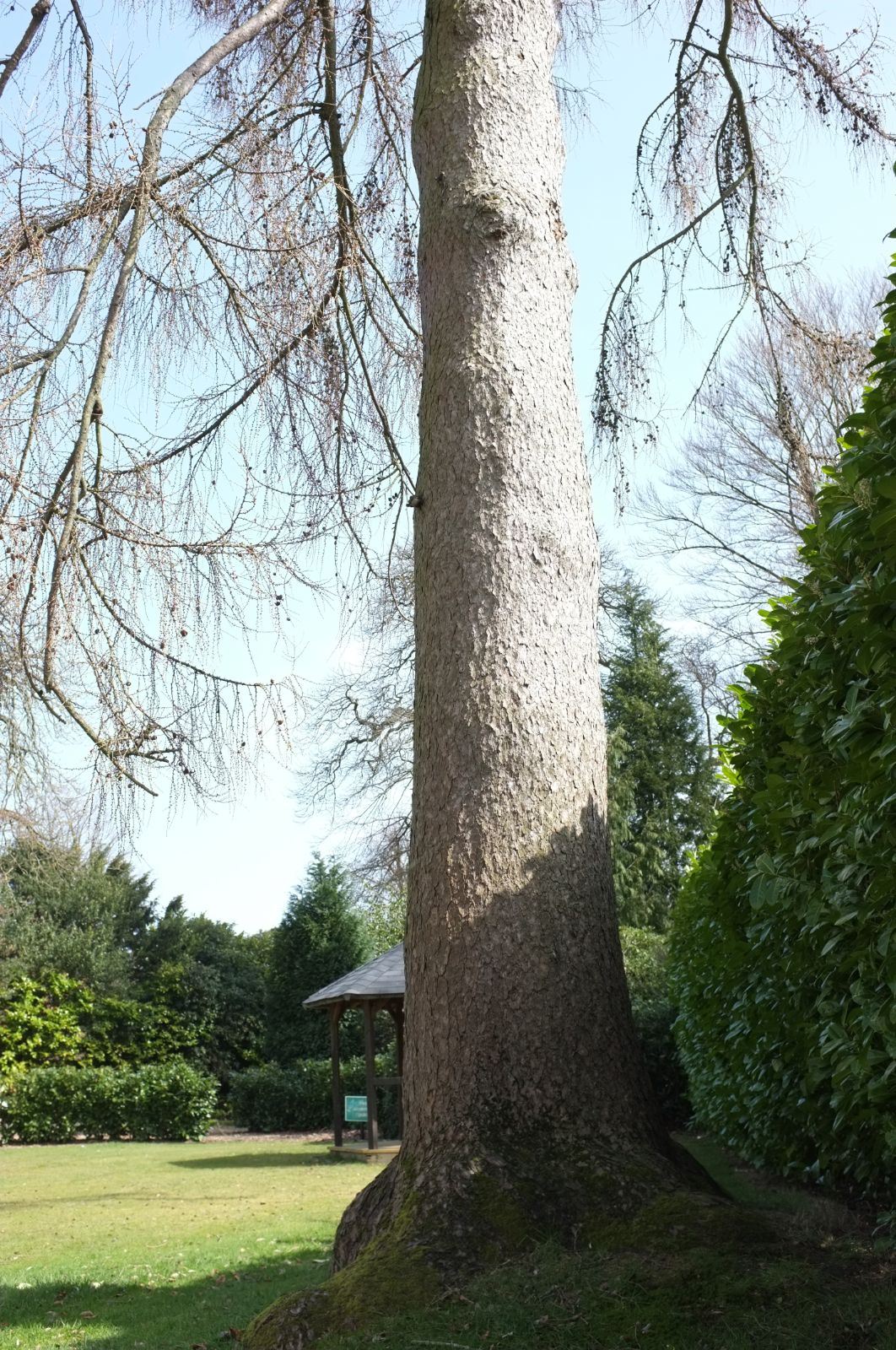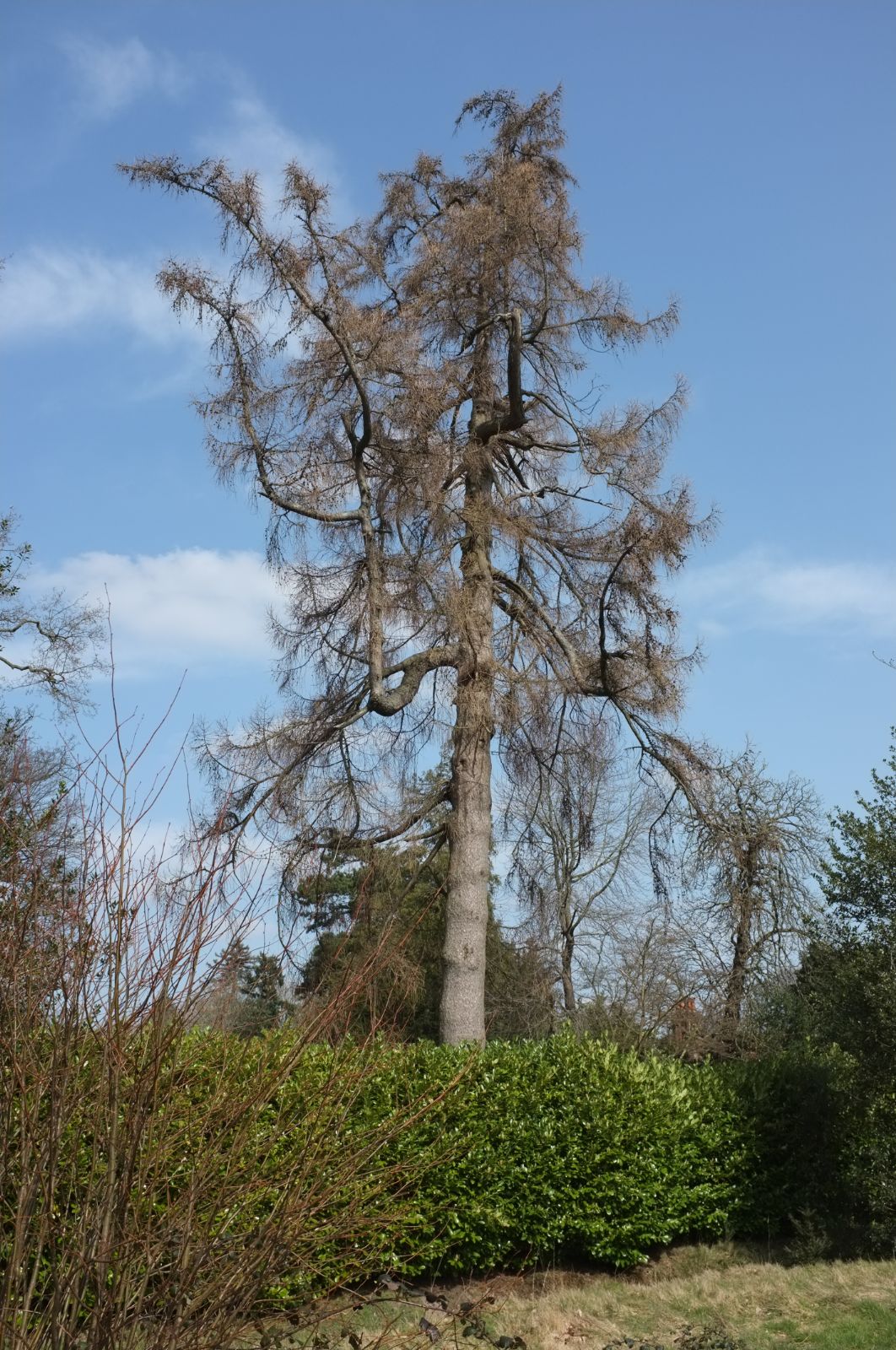Larix × pendula
Sponsor
Kindly sponsored by
This genus has been sponsored and new text is being prepared.
Credits
Article from Bean's Trees and Shrubs Hardy in the British Isles
Recommended citation
'Larix × pendula' from the website Trees and Shrubs Online (treesandshrubsonline.
Genus
Synonyms
- Pinus pendula Soland.
- Larix americana var. pendula (Soland.) Loud.
A tree so far up to 90 ft in cultivation. Young shoots glabrous, pinkish by the end of the first season, brown in the second year. Leaves as in L. decidua but somewhat blunter at the apex. Cones 3⁄4 to 11⁄4 in. long, ovoid; scales twenty to thirty, downy on the outside at the base; bracts concealed.
L. × pendula was described (as Pinus pendula) by Solander in 1789, from a tree growing at Ridgway House, Mill Hill, formerly the property of Peter Collinson, who had died twenty years earlier. Solander said it was a native of North America and that Collinson had it in cultivation in 1739, citing Miller’s Dictionary as the authority for the date and origin. Miller’s account, under Larix, reads: ‘There is a particular Sort of this Tree, which was brought from America, which is growing in the garden of Mr. Peter Collinson at Peckham in Surry, which differs from the European Kind, in having darker Shoots. This Kind I do not find mentioned by the Botanists nor has it long been known in Europe, tho’ it grows plentifully in some of the Northern parts of America. This doth not promise to make so large Trees as the European kind … It may be propagated by Seeds, after the same manner as hath been directed for the European Kind … and being a Native of cold Countries, will endure the severest Cold of this Climate’ (The Gardeners Dictionary, abridged edition, 1740).
At the time when Miller wrote this account Collinson lived at Peckham, but around 1737 he had started to plant in his father-in-law’s garden at Ridgway House, Mill Hill, which he inherited in 1749, living there for the rest of his life (N. Brett-James, Life of Peter Collinson, p. 48). It is usually assumed that Collinson transplanted the Peckham larch to Mill Hill, and that it was this very same tree that provided the type specimen of Larix pendula. If that is indeed so, we must conclude either that L. pendula is or was a native of North America; or, alternatively, if L. pendula is a hybrid between the European and American larch, the latter must have been introduced to Britain well before 1739, in order to have produced the Peckham tree of 1739. With regard to the first possibility, it can only be said that there is no evidence that L. pendula exists or ever has existed in North America in the wild. The second possibility, however, cannot be rejected out of hand. According to Aiton’s Hortus Kewensis, the American larch was cultivated by the Duke of Argyll before 1760. The Duke, who was a friend of Collinson, had started planting at Whitton near Hounslow around 1724, and received a share of many of the seeds that Collinson imported from America. Nor can it be ruled out that there had been some earlier, unrecorded introduction of the American larch. So there is no insuperable objection to the theory that the Peckham tree of 1739 was a garden hybrid, provided we are prepared to assume that Miller’s statement about its origin was incorrect.
There is, however, a third possibility that really accords best with common sense and is not contradicted by any known fact. It is that the Peckham larch mentioned by Miller was the American larch and that the tree at Ridgway house, from which Solander described L. pendula, was not physically the same tree as the one that grew at Peckham, but a seedling of it. If L. pendula is, as is now generally accepted, a hybrid between the American and European larch, the cross could have taken place in either of Collinson’s two gardens. Solander himself never said that the tree at Ridgway House from which he described L. pendula was the very same tree that grew at Peckham, and if he had not seen that tree he would naturally have assumed that it belonged to the same species as its seedling. It is not even certain if the Peckham tree was ever moved to Ridgway House. Loudon states that it was moved, but he was writing three-quarters of a century after Collinson’s death.
The tree at Ridgway House, Mill Hill, was cut down about 1800 ‘to make a rail’. Nothing seems to be known of its size or habit, but Sir James Smith, who must certainly have seen it, refers to it as ‘one of the treasures of the Mill Hill garden’. The famous tree at Woburn, figured in ‘Elwes and Henry’ (as L. dahurica) also no longer exists. Recent records are: Kew, 62 × 5 ft (1970); Warnham Court, Sussex, 90 × 41⁄2 ft (1969); National Pinetum, Bedgebury, Kent, pl. 1925, 72 × 43⁄4 ft (1970); Hergest Croft, Herefi, pl. 1859, 60 × 6 ft (1969).
From the Supplement (Vol. V)
specimens: Kew, 59 × 31⁄4 ft (1980); National Pinetum, Bedgebury, Kent, 82 × 51⁄2 ft, 82 × 41⁄2 ft and 68 × 5 ft (1982); Warnham Court, Sussex, 92 × 51⁄4 ft (1983); Hergest Croft, Heref., 82 × 61⁄2 ft (1985).



